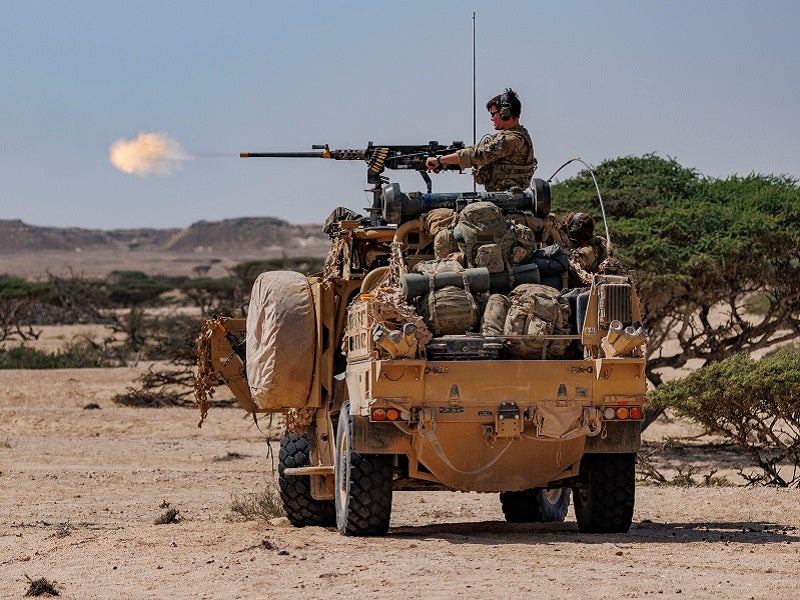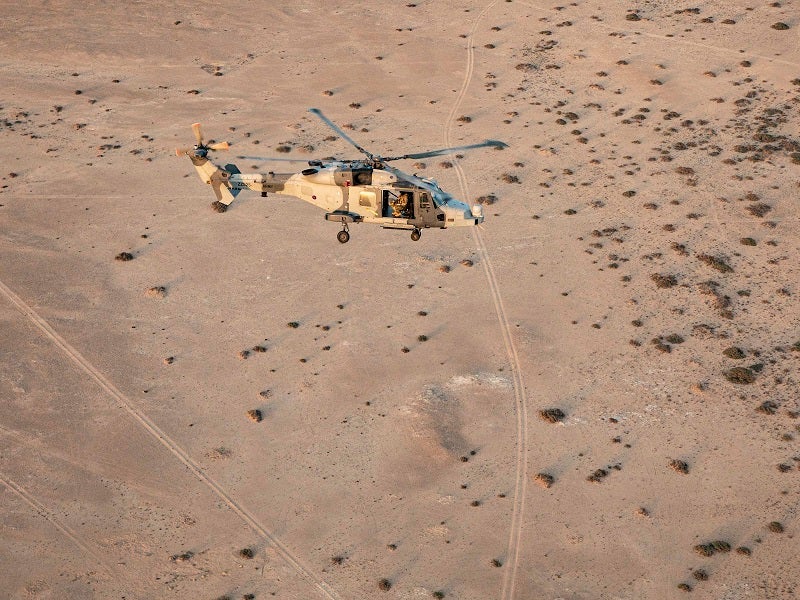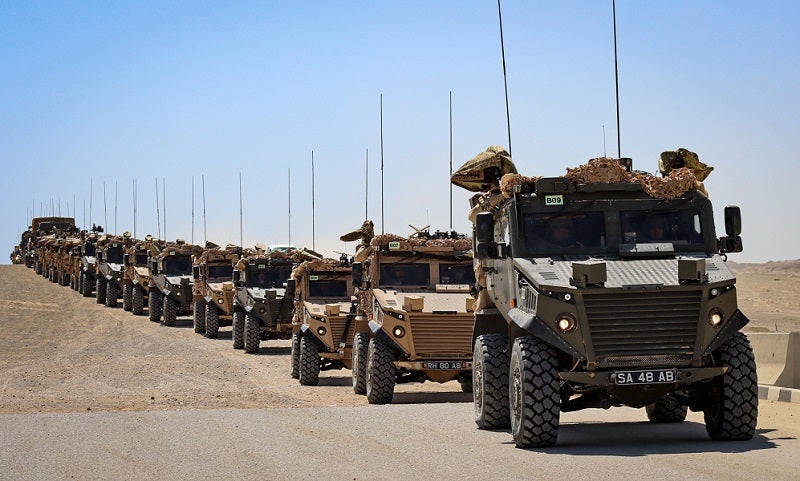
The British Army is increasing its presence in the Sultanate of Oman as the use of the Ras Madrakah training area, located near the strategic Duqm drydock and the UK’s Joint Logistics Support Base, is raised from around six week per annum currently to more than eight months over the calendar year.
Further confirmation of the change in duration of deployments to Ras Madrakah came during a UK Defence Committee hearing on 1 November, when Secretary of State for Defence Ben Wallace said the site would host two separate training blocks per year, each with a duration of up to four months.
The move is in line with the 2021 Integrated Review’s intent for UK defence assets, to increase overseas engagement through exercises and the forward deployment of assets. The British Army’s contribution to this is through the Land Strategic Hubs concept, intended to enable persistent engagement with allies as well as provide crucial training.

It is expected that deployments to the Land Regional Hub (Oman) will be shared between two units, with those training at the Ras Madrakah Joint Training Area situation in the region. It is not known what additional military UK personnel will be needed to facilitate the increased use of the site, although the UK Ministry of Defence’s Directorate of Basing and Infrastructure is conducting work under Project Khanjar to develop supporting structures within the Global Strategic Hub (Oman).
Project Khanjar, suborned to the Global Strategic Hub (Oman) programme, is a British Army-led project that will work with the Government of Oman to develop the Ras Madrakah Joint Training Area into a regional centre of excellence for military training.
Currently, Ras Madrakah is being used by the British Army to exercise both light mechanised infantry and light cavalry groups, with the Foxhound vehicle deployed to enable light mechanised training. While the site has hosted heavy armour manoeuvres in the past, it is thought that there are no funded plans to exercise heavier forces, such as Challenger 2 tanks, nor long range fires platforms like the M270B1/B2, there in the near future.
For the remainder of 2022 and through 2023, light mechanised infantry battlegroups and aviation assets will exercise alongside their Omani counterparts at Ras Madrakah, using platforms such as the Foxhound and Jackal vehicles, as well as AW159 Wildcat helicopters.
Oman as the hub
The Sultanate of Oman has long been a key location for the UK’s military presence in the Gulf and Indian Ocean region, alongside the Mina Salman Naval Support Facility in fellow Gulf Cooperation Council member state Bahrain and the coalition Al Udeid air base in Qatar.

Situated in a strategic location on the southern end of the Arabian Peninsula, Oman’s access to deep water ports and expansive land training areas has resulted in significant investment by the UK into creating tri-service infrastructure in the country.
The first four-month rotation deployment to Oman began in September with the Exercise Desert Khanjar 2022 with nearly 1,000 personnel deployed across the services, including 800 from the British Army. The deployment is led by the UK’s 4th Light Brigade Combat Team, which is based around the 2nd Battalion, The Royal Regiment of Scotland light mechanised infantry battlegroup.
According to the British Army, the exercises are a step towards building for the future Exercise Saif Sareea 4 in 2028.




